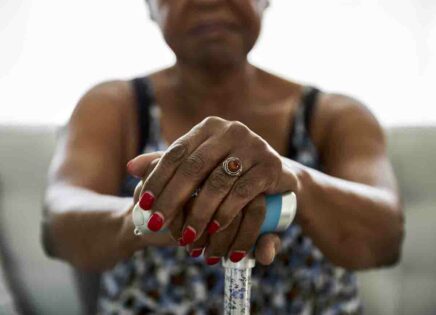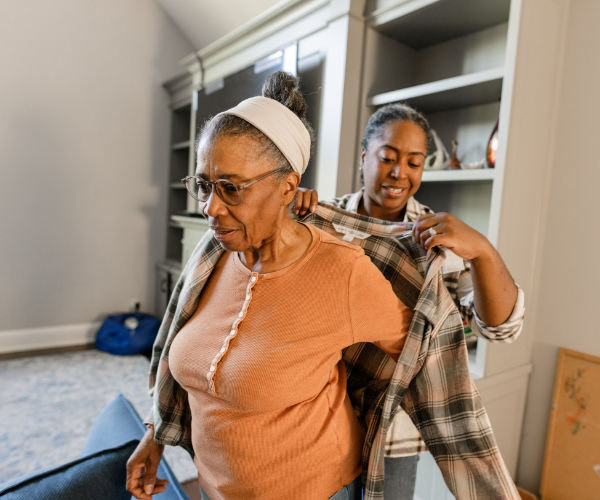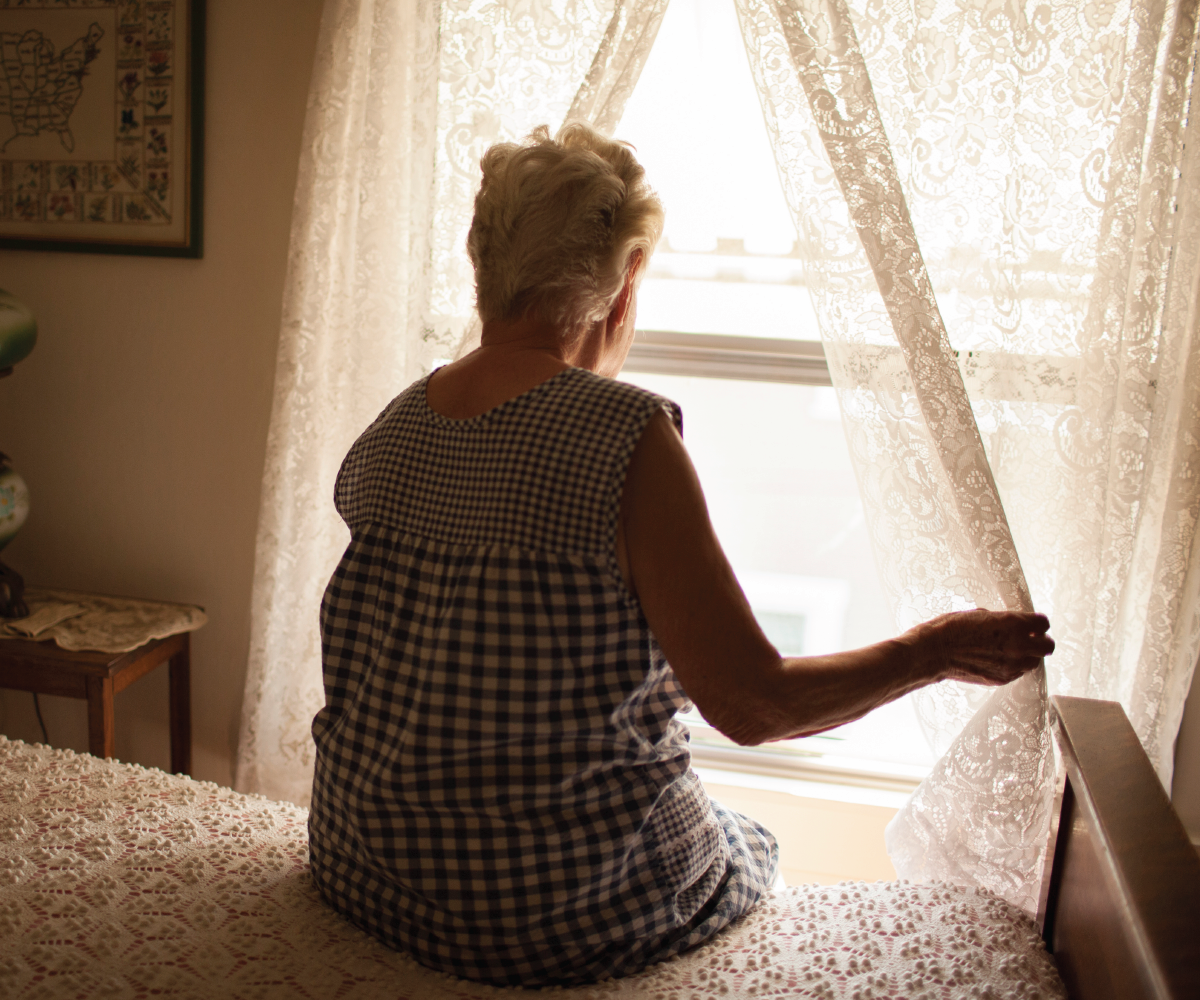Toshiko Kaneda
Technical Director, Demographic Research

Falls are the leading cause of injury for older Americans, with more than one in four adults ages 65 and older falling each year. For those with dementia, the risk of falling—and of serious consequences like fractures, hospitalizations, and decline, and placement in a nursing home—is even higher.
New research funded by the National Institute on Aging explores the relationship between dementia and falls among older adults who live in communities, as opposed to in institutionalized settings like nursing homes or assisted living facilities. Experts call for tailored strategies like better caregiver education and coordination between caregivers and health care providers to prevent falls among this vulnerable population.
The U.S. population is aging rapidly, and the number of dementia cases continues to rise. More Americans are also opting to age in place—or live at home as long as possible. In this context, understanding fall risk and supporting caregivers with evidence-based strategies to mitigate it are increasingly urgent, research suggests.
Nearly half of older adults with dementia living in community settings experienced a fall in a one-year study period, compared to about one-third of their peers without dementia, according to a study by Safiyyah M. Okoye from Drexel University and her colleagues from Johns Hopkins University.1 Data were from the National Health and Aging Trends Study (NHATS).
Comparing the fall risk factors among older adults with and without dementia, Okoye and her colleagues found that a history of falling was the strongest predictor of future falls in both groups, but especially among those with dementia.
In addition, vision impairment is a major risk factor for falls among older adults with dementia but not for those without the condition, suggesting that cognitive decline may exacerbate the challenges of poor vision. On the other hand, depression was only predictive of falls for those without dementia, possibly due to challenges in diagnosing depressive symptoms in people living with dementia.
Unexpectedly, living with a spouse was linked to a higher risk of falling among older adults with dementia, possibly because those living alone may be more physically and cognitively capable while those living with a spouse may already have more severe impairments, the researchers said. Additionally, spouses who act as caregivers may have their own aging-related health challenges, making fall prevention more difficult.

Researchers found that a history of falling was the strongest predictor of future falls among all older adults, but especially among those with dementia.
“Caregiver support and education is an understudied component of falls prevention programs” for people with dementia living with family caregivers, the researchers said, deserving “greater attention from clinicians, researchers, and policy makers.”
Another unexpected finding: Individuals with dementia in high-deprivation neighborhoods had a lower fall risk than those living in wealthier areas. The authors suggest this may be due to greater access to community support services; for example, public housing units, more common in lower income areas, are far more likely to be accessible to people with moderate mobility difficulties compared with owner-occupied units. Additionally, it may reflect selection bias in the study sample: Older adults with advanced dementia may be more likely to be institutionalized if they live in high-deprivation neighborhoods, making them less likely to be included in the study.
That different risk factors may apply to older adults with and without dementia suggests that fall prevention programs should not be designed with a one-size-fits-all approach. Instead, strategies must be tailored to the unique cognitive, behavioral, and functional impairments that may alter fall risk for older adults with dementia. Such a nuanced approach could improve health outcomes, enhance quality of life, and reduce health care costs.
Many older adults are afraid of falling, which can sometimes be as debilitating as the falls themselves. While a certain level of concern is natural and can lead to cautious behavior, excessive fear can cause individuals to limit their activities out of fear, leading to physical weakness that increases the risk of falling.
Yuanjin Zhou of the University of Texas at Austin and colleagues used NHATS data to examine how pain is associated with fall worry among older adults with cognitive impairments, including mild impairment and dementia.2
“Both pain and fall worry are poorly understood and underaddressed” among older adults with dementia, the researchers said, but managing pain is important to reduce the fear of falling in this population.
People who reported multiple pain sites were more likely to experience fall worry that limited their mobility, creating a cycle where pain and inactivity reinforce each other. Severe pain had a particularly strong association with activity-limiting fall worry.
The location of pain also matters. Lower-body pain (for example, in the knees, feet, or legs) contributes to fall worry since these areas are directly involved in mobility and balance. However, upper-body pain, including pain in the hands, wrists, shoulders, neck, and stomach, was also significantly associated with fall worry, perhaps because pain in these areas may inhibit balance, affecting the ability to brace for impact during a fall or to use mobility aids effectively and thereby exacerbating fear and avoidance. Surprisingly, back and hip pain were not significantly linked to fall worry, possibly because they lead to sedentary behavior that reduces fall risk.
Addressing pain is not only essential for improving comfort but is also a critical step in preventing falls and maintaining independence for older adults with cognitive impairment. Health care providers can help by:
Family and friend care partners play a critical role in reducing fall risk among community-dwelling older adults with dementia. These caregivers can provide mobility and safety assistance, coordinate medical and social services, and help manage health, as well as make accommodations or adjustments in their own lives to provide better care, according to another study led by Zhou.3
For this study, Zhou and her colleagues examined how care partner engagement influenced fall risk for community-living older adults with dementia, both among those who had fallen in the previous year and those who had not, using data from NHATS and the National Study of Caregiving.
Unexpectedly, some caregiving behaviors were linked to an increased fall risk. For older adults with dementia who had not fallen in the past year, greater mobility and safety assistance, such as helping with walking, standing, toileting, and modifying the home environment, was linked to a higher risk of falls the following year. This suggests that excessive assistance may lead to increased care burden as well as restriction of older adults’ activities, which paradoxically raises fall risk, Zhou and colleagues explain.
Social service coordination, such as arranging for paid caregiving support or community resources, was associated with lower fall risk among those who had fallen in the past year, but higher risk among those who had not. This suggests that formal fall prevention efforts, such as physical therapy, home modifications, and structured caregiver training, tend to be introduced reactively rather than proactively, Zhou and colleagues say.
However, fall risk was not impacted by caregivers’ medical service coordination (such as assistance with medical appointments and medication management) or health management behaviors (such as support with diet, exercise, dental care, and wound care), suggesting that current medical interventions may not be sufficiently tailored to prevent falls for people with dementia.
So, while some caregiver behaviors, such as social service coordination, can be protective after a fall has already occurred, others—such as excessive mobility assistance and medical and social service coordination—may not help reduce future fall risk. These findings suggest the need for better caregiving strategies, caregiver education and support, and coordination between caregivers and health care and community service providers to improve fall prevention outcomes for people with dementia.
1. Safiyyah M. Okoye et al., “Predictors of Falls in Older Adults With and Without Dementia,” Alzheimer’s & Dementia 19, no. 7 (2023): 2888-97.
2. Yuanjin Zhou et al., “Association Between Pain and Fall Worry Among Community-Dwelling Older People With Cognitive Impairment in the United States,” Innovation in Aging 7, no. 10 (2023).
3. Yuanjin Zhou et al., “Care Partners’ Engagement in Preventing Falls for Community-Dwelling Older People With Dementia,” The Gerontologist 64, no. 8 (2024).



